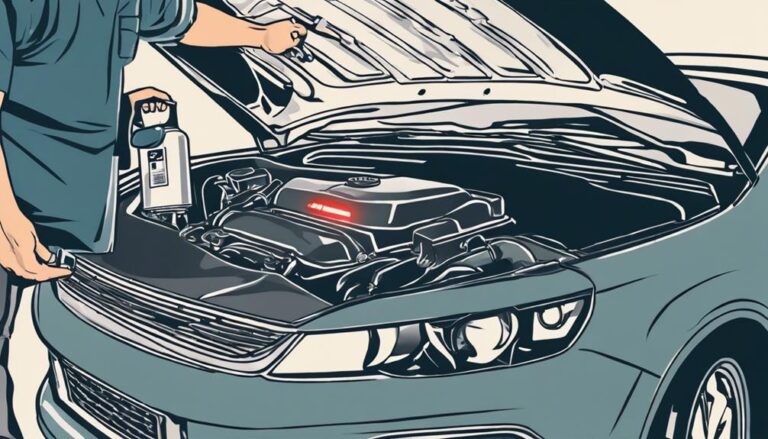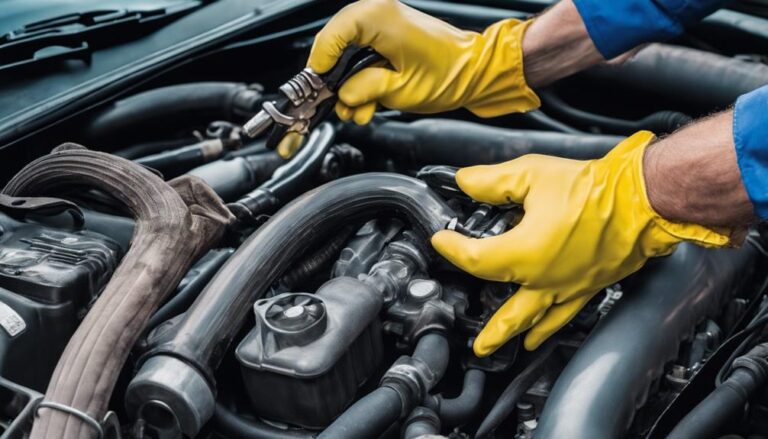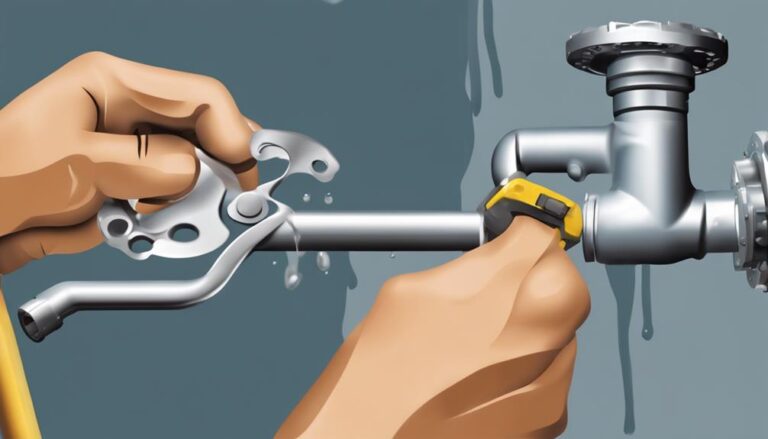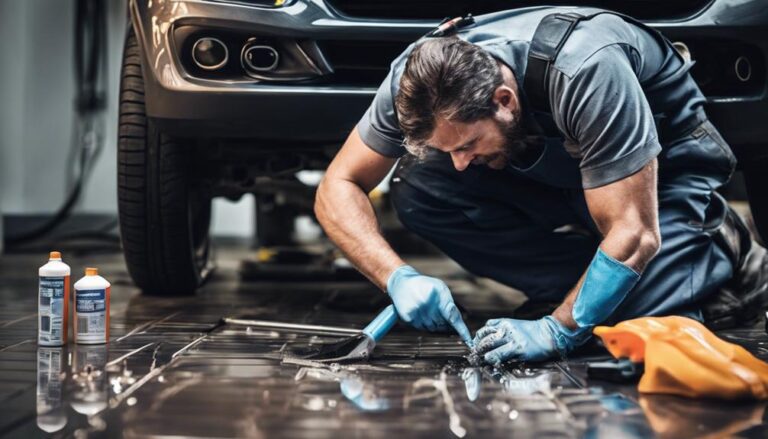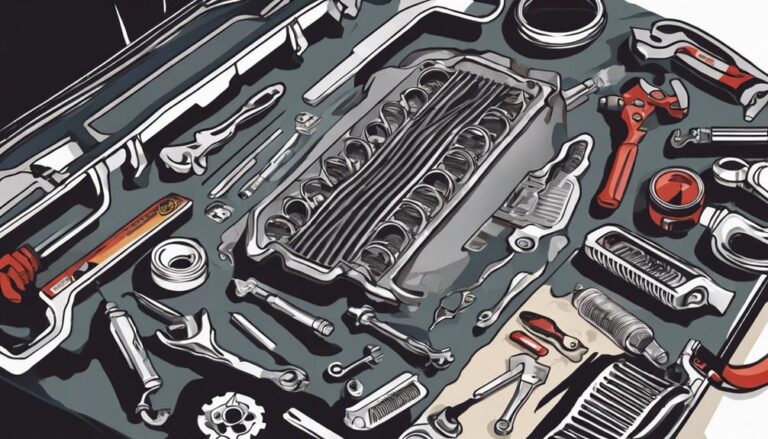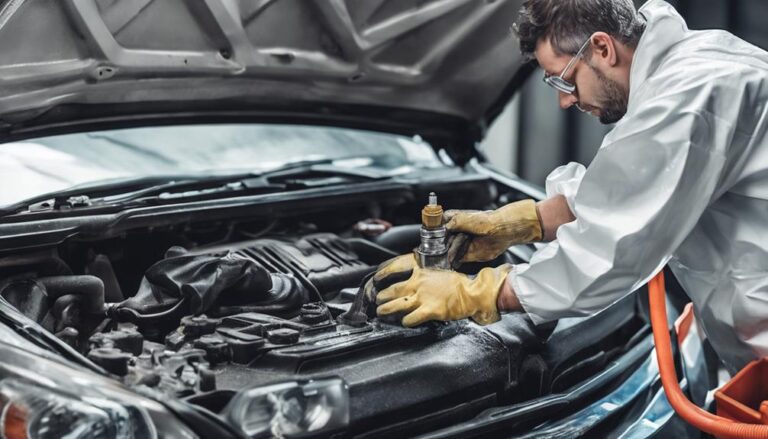3 Best Steps for Air Bleeding Cooling System
When it comes to maintaining your vehicle's cooling system, air bleeding is a critical process that ensures optimal performance.
But how exactly do you go about it? By following three essential steps, you can effectively remove air pockets and prevent potential engine overheating.
So, are you ready to learn the best practices for air bleeding your cooling system and keeping your engine running smoothly?
Key Takeaways
- Identify the highest point in the cooling system for effective air bleeding.
- Park on a level surface and allow the engine to reach working temperature.
- Turn on the heater and check/adjust coolant level during the process.
- Ensure the cooling system is free of air pockets by following meticulous steps.
Understanding the Air Bleeding Process
To properly grasp the significance of the air bleeding process in a cooling system, it's crucial to understand its role in maintaining optimal coolant circulation and preventing potential engine issues.
Common mistakes in air bleeding often stem from incomplete procedures, leading to trapped air pockets that hinder proper coolant flow. By effectively removing these air bubbles, the benefits of air bleeding become apparent.
Proper air bleeding ensures that coolant circulates freely, preventing overheating and maintaining the engine's cooling efficiency. It aids in averting potential engine damage caused by hot spots that can form when air obstructs the coolant flow.
Neglecting this process after maintenance involving coolant drainage can result in subpar cooling system performance. Therefore, understanding and executing the air bleeding process correctly are vital for sustaining the health and performance of your cooling system.
Mastering this technique guarantees consistent engine temperature regulation and optimal cooling system functionality.
Tools Needed for Air Bleeding
If you encounter difficulties during the air bleeding process due to trapped air pockets, having the necessary tools for efficient air removal is crucial. When selecting tools for air bleeding, consider the following:
- Coolant Refiller Tool: This tool creates a vacuum to remove air from the cooling system efficiently, eliminating the need for traditional bleeding methods.
- Bleeder Valves: Some vehicles come equipped with bleeder valves that aid in the air bleeding process.
- Manufacturer Recommendations: Follow manufacturer-specific guidelines; they may suggest disconnecting hoses or drilling holes for air release during coolant refill.
- Accessibility: Coolant Refillers are ideal for cars without easily accessible radiator caps for air bleeding.
- Efficiency: Using the right tools can make the air bleeding process quicker and more effective.
Understanding the importance of tool selection is key to successful air bleeding, as it can streamline the process and help you avoid potential drawbacks associated with trapped air in the cooling system.
Step-by-Step Air Bleeding Procedure
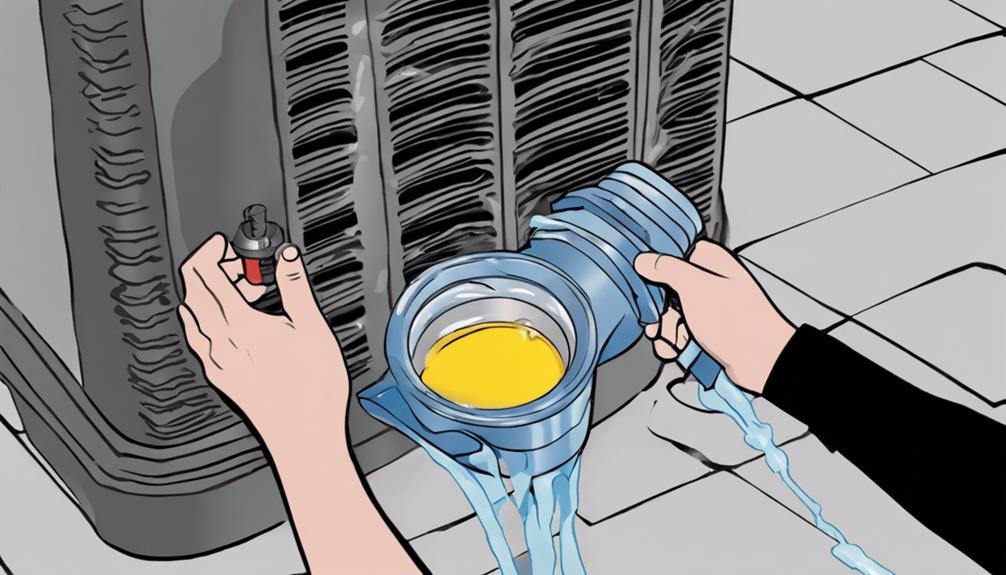
Identify the highest point in the cooling system where air typically accumulates to begin the air bleeding process efficiently. This point is often near the radiator cap or the highest hose connection.
Park your vehicle on a level surface before starting the engine. Allow the engine to reach its working temperature, then turn on the heater to help circulate the coolant and expel air pockets effectively.
Throughout the bleeding process, remember to check and adjust the coolant level as needed to prevent overheating. Common mistakes during air bleeding include rushing the process and not topping up the coolant adequately.
Expert tips suggest consulting your owner's manual or seeking professional advice for specific bleeding instructions tailored to your vehicle. By following these steps meticulously, you ensure that your cooling system is free of air pockets, promoting optimal performance and preventing potential damage.
Frequently Asked Questions
How Do You Bleed an Air Cooling System?
To properly bleed an air cooling system, start by turning off the engine and letting it cool before removing the cap. Fill with coolant, start the engine, monitor levels, and use the heater. Consult the manual for specific instructions on enhancing cooling efficiency.
How Do I Get Air Bubbles Out of My Cooling System?
When bleeding air from your cooling system, start by ensuring the engine is warm. Monitor coolant levels and top up as needed. Proper bleeding techniques prevent overheating issues. Post-bleeding, check levels, cap the radiator, and confirm system function with a short drive.
How Do I Know if I Have Air Trapped in My Cooling System?
If you suspect air in your cooling system, watch for temperature gauge fluctuations, reduced heat, gurgling noises, or coolant level changes. Prevent air traps with proper maintenance. Listen, observe, and act swiftly to ensure optimal cooling system performance.
How Do You Remove an Airlock From Coolant?
When dealing with an airlock in your coolant system, it's crucial to address it promptly. To remove the airlock, monitor for coolant bubbling and listen for the radiator burping. Adjust coolant levels as needed to ensure optimal functioning.
Conclusion
In conclusion, by following the three best steps for air bleeding a cooling system, you can ensure optimal engine performance and prevent overheating issues.
With the right tools and a methodical approach, you can eliminate air pockets and maintain efficient cooling.
Remember to start by turning off the engine, filling the coolant to the full mark, and monitoring the level while the engine runs.
Stay proactive and keep your vehicle running smoothly with proper air bleeding techniques.


